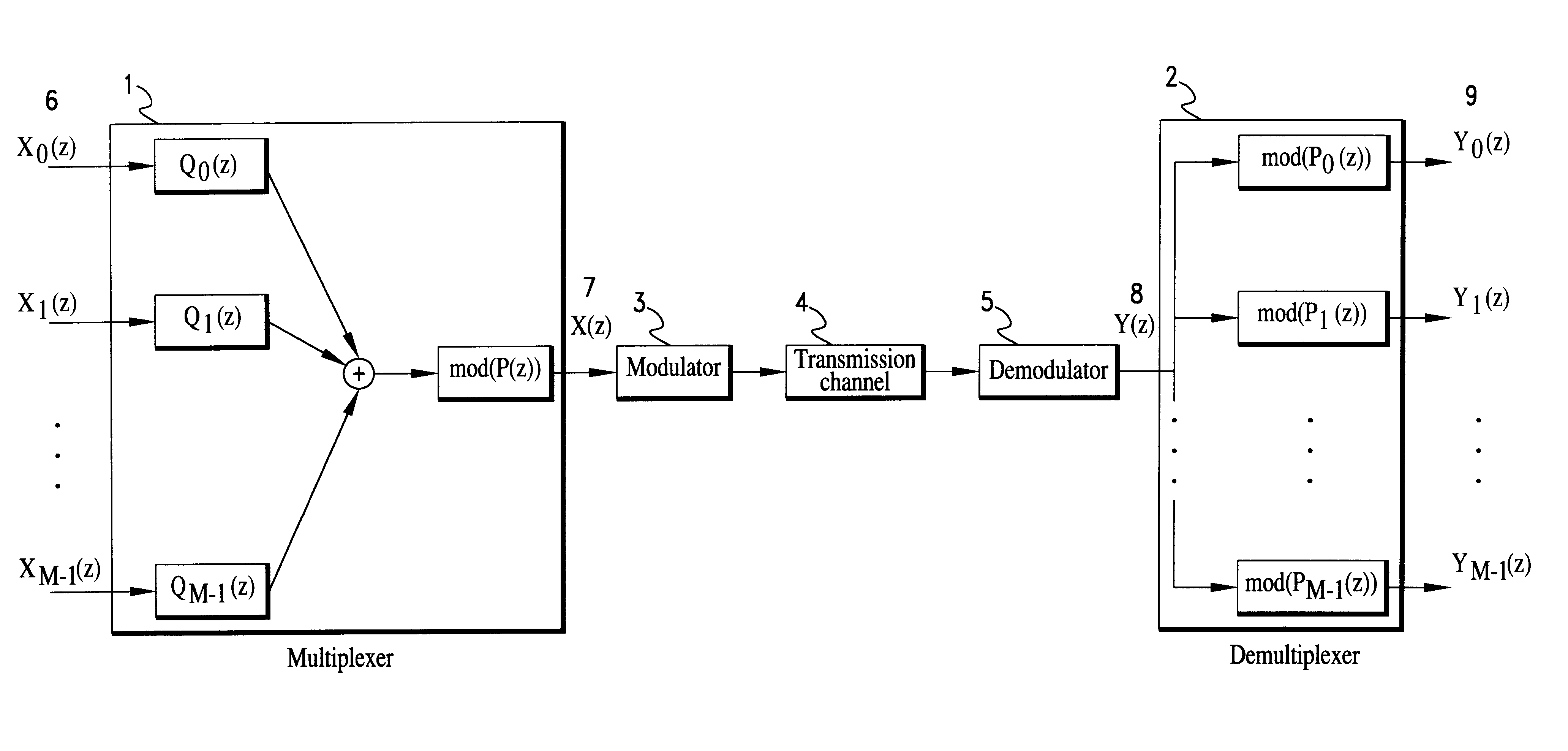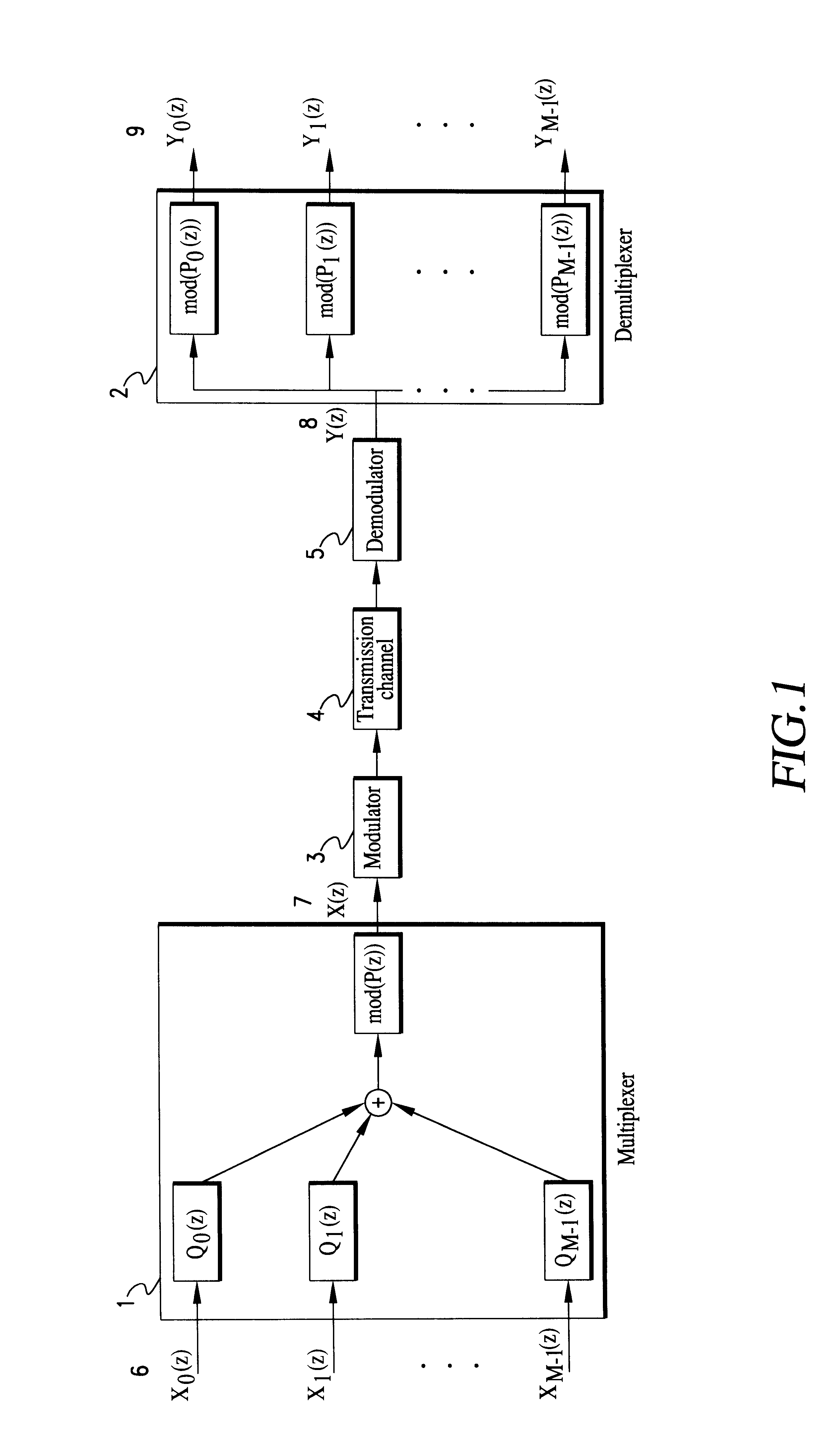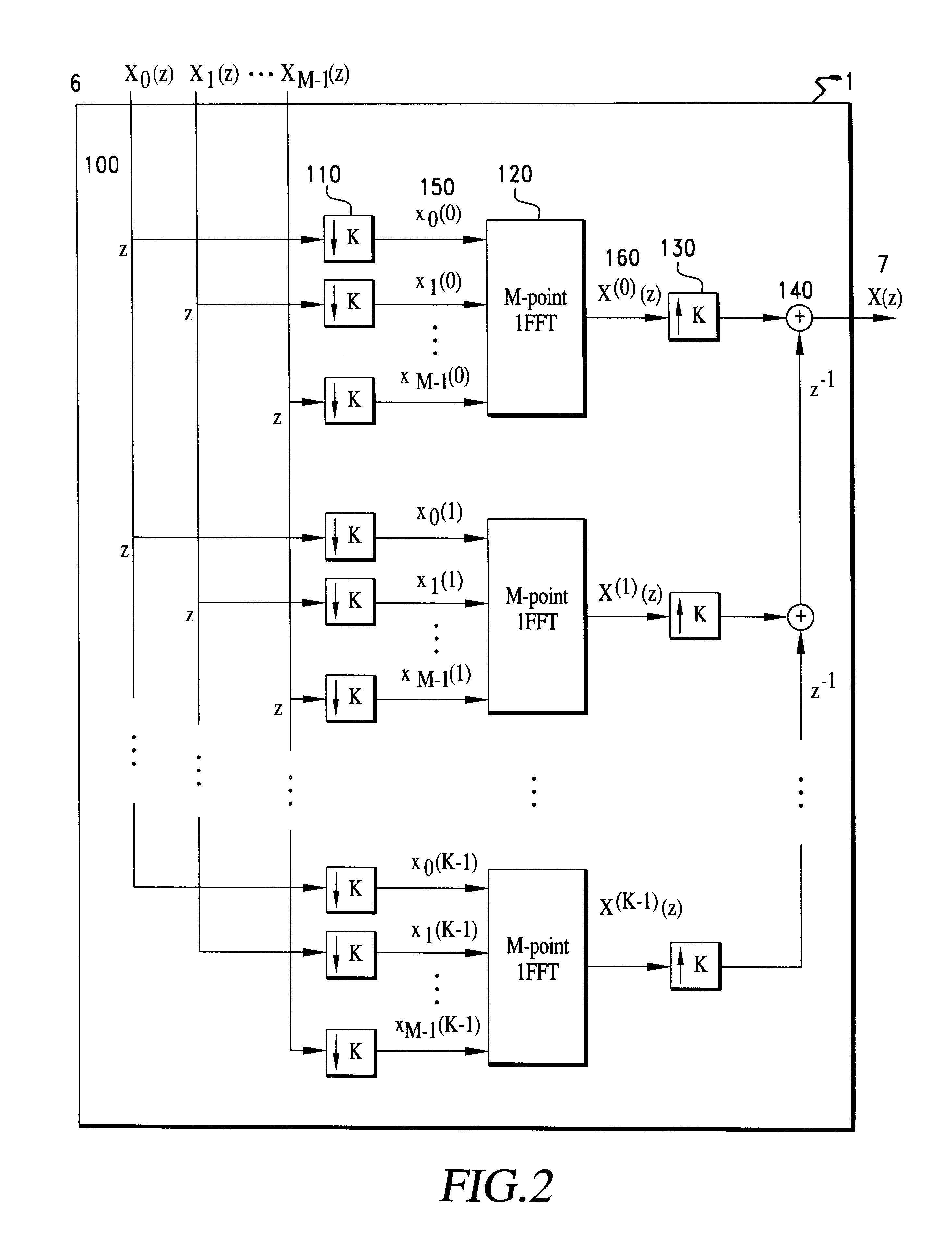Residue division multiplexing system and apparatus for discrete-time signals
a discrete-time signal and multiplexing technology, applied in the field of multiplexing system and multiplexing and demultiplexing apparatuses for telecommunication, can solve the problems of inability of unauthorised listeners to extract the subchannel signal's components, inability to efficiently use transmission bandwidth, and interchannel interference of tdm
- Summary
- Abstract
- Description
- Claims
- Application Information
AI Technical Summary
Benefits of technology
Problems solved by technology
Method used
Image
Examples
first embodiment
In this embodiment, both the subchannel signals and the multiplexed signal take complex values. The complex multiplexed signal can be transmitted via the carrier frequency transmission by quadrature amplitude modulation (QAM). The QAM process modulates the in-phase and quadrature components of the carrier by the real and imaginary parts of the complex multiplexed signal, independently. Assuming that this modulation scheme is used for transmission, the multiplexing system for complex signals is implemented. The multiplexer 1 and the demultiplexer 2 are shown to be implemented efficiently for the appropriate choices of P.sub.m (z), m=0, 1, . . . , M-1.
FIG. 2 shows a block diagram of the multiplexer 1 suitable for complex signals in which the number of subchannels is M, and the length of the subchannel signals is K. Each of the subchannel signal polynomials is first divided into its coefficients, which are then fed to the inputs of an IFFT (Inverse Fast Fourier Transform) processor 120...
second embodiment
In many cases, signals such as speech and images are quantized to take only specified values. For these signals, the subchannel signals can be represented as integer-valued sequences with a finite range. In the following description, the multiplexing system of the first embodiment is modified here for multiplexing such integer-valued subchannel signals.
Number theoretic transform is known as a transform method for integer-valued signals of a finite range. Let q be a positive integer, and R(q) denote the integer residue ring on mod(q). Elements of R(q) are generally represented as integers, 0, 1, . . . , q-1, and the addition and multiplication of the elements are performed by integer residue arithmetic on mod(q). If an element .alpha. in R(q) satisfies
.alpha..sup.n.ident.1 mod(q) (16)
and if .alpha..sup.x is not unity for any positive integer x of less than N, then .alpha. is referred to as a primitive Nth root of unity in R(q). Since all the arithmetics are integer residue arithmetic...
third embodiment
For digital communication, signals are generally represented as sequences of binary digits 0 and 1. In this embodiment, the multiplexing system of the first embodiment is modified to be suitable for such binary subchannel signals.
For a prime integer q and a positive integer r, it is possible to build a finite field of q.sup.r elements, which is generally referred to as a Galois field denoted as GF(q.sup.r). GF(q.sup.r) is represented in r-dimensional vector form as
GF(q.sup.r)={(x.sub.1 x.sub.2 . . . x.sub.r).vertline.x.sub.i.epsilon.GF(q)} (21)
The elements of GF(2) are 0 and 1 so that elements of GF(2.sup.r) are represented as r-dimensional vectors with 0 and 1, and such sequences are suitable for coded signals or computer communication.
This multiplexing system is implemented by using GF(q.sup.r) in place of R(q) in the second embodiment. There exists a primitive Mth root of unity in GF(q.sup.r) if M divides q.sup.r -1. Using such a primitive root of unity, the M-point transform and...
PUM
 Login to View More
Login to View More Abstract
Description
Claims
Application Information
 Login to View More
Login to View More - R&D
- Intellectual Property
- Life Sciences
- Materials
- Tech Scout
- Unparalleled Data Quality
- Higher Quality Content
- 60% Fewer Hallucinations
Browse by: Latest US Patents, China's latest patents, Technical Efficacy Thesaurus, Application Domain, Technology Topic, Popular Technical Reports.
© 2025 PatSnap. All rights reserved.Legal|Privacy policy|Modern Slavery Act Transparency Statement|Sitemap|About US| Contact US: help@patsnap.com



